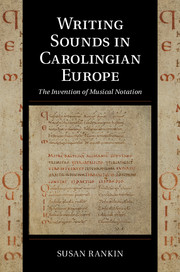Book contents
- Writing Sounds in Carolingian Europe
- Cambridge Studies in Palaeography and Codicology
- Writing Sounds in Carolingian Europe
- Copyright page
- Epigraph
- Contents
- Figures
- Tables
- Examples
- Note on Musical Examples
- Preface
- Abbreviations
- Part I Musical Literacy
- Part II Music Scripts
- Part III Writing Sound
- Appendix Manuscripts with notations written in the ninth century
- Bibliography
- Index of Manuscripts
- Index of Chants and Songs
- General Index
- References
Bibliography
Published online by Cambridge University Press: 23 November 2018
- Writing Sounds in Carolingian Europe
- Cambridge Studies in Palaeography and Codicology
- Writing Sounds in Carolingian Europe
- Copyright page
- Epigraph
- Contents
- Figures
- Tables
- Examples
- Note on Musical Examples
- Preface
- Abbreviations
- Part I Musical Literacy
- Part II Music Scripts
- Part III Writing Sound
- Appendix Manuscripts with notations written in the ninth century
- Bibliography
- Index of Manuscripts
- Index of Chants and Songs
- General Index
- References
- Type
- Chapter
- Information
- Writing Sounds in Carolingian EuropeThe Invention of Musical Notation, pp. 370 - 390Publisher: Cambridge University PressPrint publication year: 2018



